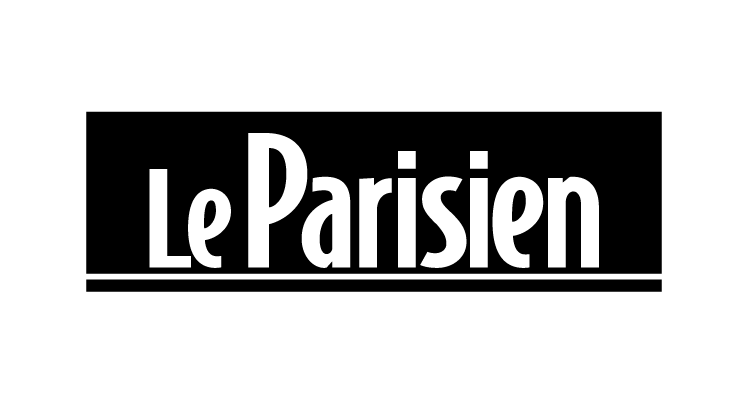Artwork of Marc Chagall drawings & artprints
Sometimes sold as simply inspired by Fauvism and Cubism, Marc Chagall's work is far more complex than it appears. By playing with colours, and without them carrying any particular meaning, the Russian-born French painter lets his spirituality, stemming from his Jewish origins, shine through in his paintings.
Discover the finest works by Marc Chagall available in the catalogue, with the oil on canvas "Les mariés de la Tour Eiffel" (1938 - Centre Pompidou), a canvas depicting a fragile happiness with his wife Bella in the face of advancing conflicts in Europe, "Nature morte cubiste" (1911), a painting resulting from his research into cubism on his arrival in Paris, or "Le Rêve" (1927 - Musée du Luxembourg), a dreamlike representation of Russian iconography.
Offer yourself a reproduction of Marc Chagall available in the catalogue, a singular artist whose life and work have profoundly marked the history of the arts, and discover his biography.
Biography of Marc Chagall
The origins and training of Marc Chagall
Marc Chagall was born in 1887 in Vitebsk, located in what is now Belarus. His origins and environment, in which religion and Jewish culture were very present, would influence Chagall's life and works, profoundly marking his art.
From an early age, Chagall showed a precocious talent for drawing, despite an environment in which religion left little room for art. Inspired by traditional Slavic icons and architecture, the young painter nevertheless managed to train in drawing in his hometown with Yuri Pen.
In 1906, he decided to pursue his artistic progress by joining the St Petersburg School of Fine Arts, then the Zvantseva School, where he discovered decorative art with Léon Bakst.
The Paris period and the rise of Marc Chagall's career
Following his training in St Petersburg, and attracted by the artistic effervescence of the French capital, the painter of Jewish origin travelled to Paris in 1910, where he immediately immersed himself in the city's buzzing artistic world.
Paris inspired Chagall and nurtured his creativity. He discovered the boldness of Fauvism and the geometry of Cubism, which from then on greatly influenced his work, without copying these movements from the family of Neo-Impressionism, and created a unique style in which bright colours and deconstructed forms mingle in paintings of striking harmony.
At the heart of this artistic fever, Chagall met some of the great names among the avant-garde painters of the day, such as Pablo Picasso, Robert Delaunay, Jean Metzinger, Henri Rousseau and Albert Gleizes. These exchanges fuelled his thinking and encouraged him to explore ever more new artistic avenues.
It was also during his Parisian years that he met Blaise Cendrars, a Russian-speaking poet, and also Guillaume Apollinaire, who shared his passion for art and accompanied him on his artistic ascent by supporting him in his use of colour in his work.
This was how Chagall created his first works that were recognised in France and Europe. This recognition from his peers enabled him to take part in the Salon des Indépendants exhibition in 1914, but also to exhibit at the famous Der Sturm gallery in Berlin, which saw a succession of innovative artists, such as Paul Klee and Wassily Kandinsky, among others.
The impact of conflict in Marc Chagall's life
In 1914, Marc Chagall temporarily returned to Russia. Although he wanted to return to France, his stay was disrupted by the war, which prevented him from returning to his adopted country. This tumultuous period had a considerable impact on his art, particularly in his depiction of the Jewish community, which at the time was being abused by the power of imperial Russia. His paintings became darker, depicting the Jewish people during this difficult period.
In 1915, Chagall married Bella Rosenfeld, whom he painted in numerous canvases from then on, and his family grew rapidly with the arrival of his daughter Ida in 1916.
In 1917, the Soviet revolution offered Chagall the opportunity to assert his vision of art, with the artist being appointed commissioner of fine arts in Vitebsk, his home town. This position enabled him to found a school to teach his conception of painting to young artists. However, his style of painting, marked by religious themes, cost him his place in favour of Suprematism, led by artists such as Lissitzky and Kazimir Malevich, who took over from Chagall as head of the school in 1922. Faced with this setback, Marc Chagall then went to Moscow to return to his love of decorative art, creating the sets for the Jewish Art Theatre in the Soviet capital, before moving on to Berlin and then Paris.
International recognition for Marc Chagall
During the inter-war period, Marc Chagall settled permanently in Paris and quickly established his international reputation, his works even crossing the Atlantic to be exhibited in the United States.
It was during this period that Chagall made the decisive encounter with Ambroise Vollard, a famous art dealer and collector. Vollard commissioned a whole collection of illustrations for the Fables de la Fontaine from him. But the collector did not stop there. He also asked Chagall for illustrations from the Bible, an ambitious project commissioned in 1930 that kept the painter busy for several years, involving the design and publication of 105 engravings from the sacred texts. This commission would even form the basis of "Message biblique", a decorative cycle on the theme of the Bible, Genesis and Exodus, designed between 1950 and 1966, and exhibited at the Musée national du Message biblique in Nice, now the Musée Marc Chagall.
Marc Chagall and exile in the United States
Faced with the advance of Nazism in Europe in the 1930s, the Russian-born artist decided to become French by taking citizenship in 1937. However, faced with the Nazi occupation and the persecution of the Jews, depicted in some of the painter's paintings at the time, Chagall fled France and took refuge in New York in 1941. This decision to go into exile, motivated by the need to protect his family and his artistic work from the horrors of the Second World War, was made possible by the intervention of the American journalist Varian Fry, who enabled many artists and intellectuals to flee Europe for the United States.
Unfortunately, escaping the conflict in Europe did not spare him the pain of loss. In 1944, his wife Bella died, leaving Chagall devastated and inconsolable, and he stopped painting for several months. However, he found love again with Virginia Haggard, with whom he would have a child in 1946, 30 years after his first daughter Ida.
The return to Europe and Marc Chagall's final years
After the end of the war, Marc Chagall left New York in 1948 and decided to return to France, his adopted country. He then settled in Vence, in the south of the country, and remarried Valentina Brodsky.
Popular, his canvases were enthusiastically received and enjoyed exhibitions around the world, his painting being sold mainly via the Maeght Foundation, a foundation for modern and contemporary art located a stone's throw from the village of Saint-Paul-de-Vence, and with whom he maintained very good relations.
It was also on his return to France that he diversified his work, exploring forms of expression other than oil on canvas, such as sculpture, ceramics, mosaics and stained glass. His colourful, poetic creations embellish iconic venues such as the Opéra Garnier, for which he will create the ceiling, Reims Cathedral and Metz Cathedral with the design of the stained glass windows, but also abroad where he will create the murals of the Watergate Theatre in London or the stained glass windows of the church of Saint-Etienne in Mainz.
ge, the Franco-Russian painter then made Saint-Paul-de-Vence his permanent base, setting up his studio there to spend the last years of his life. In this peaceful atmosphere, he continued to create, before passing away in 1985 at the age of 97, leaving behind an immortal artistic legacy.
The legacy of Marc Chagall
After his death, Marc Chagall left behind a rich and varied artistic legacy. His life was marked by a bold exploration of colour and form, as well as a deep spirituality stemming from his Jewish origins.
His legacy can now be found in many museums around the world, from the Musée national Marc Chagall in Nice, home to one of the most important collections of his work, including some of the most famous with his gouaches and engravings from his work on the Bible, to the Centre Pompidou in Paris, via L'Opéra Garnier and its majestic ceiling representative of the Soviet-born French artist's training in the decorative arts, or the Museum of Modern Art in New York, a host city for the painter during the 1940s.
His influence continues to be felt in the art world, where his vivid colours and unique style continue to inspire many contemporary artists, with his work selling for high prices and copies still in demand, confirming the importance and value of his legacy.








































